�
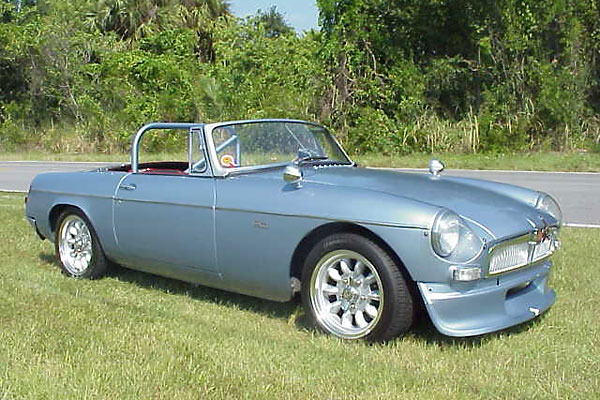
�
Dr. George Snively's 1965 MGB with Ford 289cid V8
�This MGB was professionally-converted to Ford V8 power in 1966!
� as published in British V8 Newsletter, Volume XV Issue 3, December 2007�� Current Owner: Jens Doessing of Aarhus, Denmark
� Original Owners: Dr. George Snively and Dr. Clinton O. Chichester
� City: Sacramento, CA
� Model: 1965 MGB
� Engine: Ford 289 V8
� Conversion by: unknown
�
Executive Overview
�| Engine: | �Ford 289 Hi-Po V8 - originally sourced as a "crate engine" from �
Holman and Moody in 1966. | �
| Transmission: | �Ford "Toploader" 4-speed. | �
| Rear Axle: | �Ford 9" with a 4.11:1 final drive ratio and limited slip differential. | �
| Front Susp.: | �stock MGB, with anti-sway bar. | �
| Rear Susp.: | �fiberglass single-leaf rear springs (a more recent addition), �
traction bars, and Girling adjustable competition shocks. | �
| Wheels/Tires: | �Superlite 15" (8-spoke Minilite replica) wheels. | �
| Body/Trim: | �silver-blue paint and mostly original black leather upholstery. �
(Notice however that the seats have been narrowed to accomodate the widened �
driveshaft tunnel.) The body is rust free and original, and it features the �
original aluminum hood (with a supplemental leather-strap hold-down.)�
Sebring-style headlight covers. Bumpers removed. Fiberglass air dam and �
Sebring-style rear valance. Flared rear fenders. Roll hoop. | �
| Mileage: | �22,000 miles (almost all of them with V8 power). | �
Historical Notes
�� Sacramento physician Dr. George Snively, whose name appears on the original registration � for this car, was well established as a driver in the California sports car racing scene � of the late fifties. He was an enthusiastic racer who was winning races in his Austin � Healey 100 as early as 1956. He continued racing a variety of interesting sports cars through � the mid sixties, including a very rare WSM (a stylish and fast aluminum-bodied British sports � car based on Austin-Healey Sprite mechanicals and underlying structure.) However, Dr. Snively's � biggest contributions to racing were in the area of testing, evaluation, and certification � of helmets. �
��
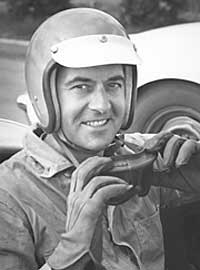 �
�
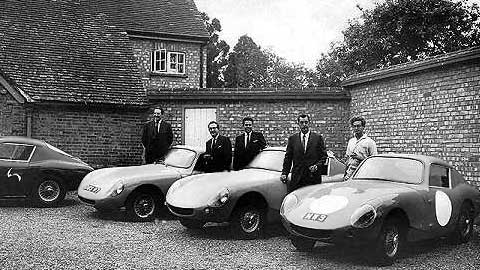
�
The photo at right shows Dr. Snively, 4th from left, with his WSM race car. This photo �
appeared in "Safety Fast" magazine's January 1965 issue. The other gentlemen are (l-to-r) �
the car's principal designer Doug Wilson-Spratt, Healey expert Peter Jackson, business partner �
and "the M in WSM" Jim McManus, and British racecar driver Mike White.
�
�
Dr. Snively, together with lifelong collaborator Dr. C.O. Chichester, were founding �
members of the Snell Memorial Foundation, which for fifty years has been the leading �
independent laboratory and certification provider for all sorts of competition and sports �
protective headwear (including helmets for motorcyclists as well as bicyclists, equestrians, �
skiers, etc.) Their shared interest in helmet testing started with the death of fellow �
amateur racer Pete Snell in 1956. Pete Snell's Triumph TR3 rolled over in competition. �
Although he was wearing a state-of-the-art helmet, he died of brain injuries. Members of �
the San Francisco Region SCCA started putting together a memorial fund to honor his memory.�
�
Dr. Snively had already started testing helmets on his own, but he quickly realized that �
the Snell memorial fund (which ultimately reached $713) could be leveraged into great �
benefit to the sport of racing. Dr. Snively continued as Director and chief researcher �
at the Snell Memorial Foundation until his death by heart attack in 1983.�
�
We don't know exactly when Dr. Chichester took over ownership of the MGB V8. The answer �
seems obscured because the two gentlemen worked very closely together. Dr. Chichester had �
co-managed a sports car racing team with Dr. Snively in the 1950's, and they worked �
together in their professional life too. Dr. Chichester served as Snell's President into �
the 1990's.�
�
Before Snell Memorial Foundation helmet testing, most helmet designs featured relatively �
soft padding. In preliminary testing with human cadavers, Dr. Snively quickly recognized �
that in accidents the helmet padding would compress quickly and the head would violently �
contact either the outer helmet shell or some surface beyond. A much thicker layer of more �
rigid padding (e.g. styrofoam) was needed so that the impact force would be absorbed over �
a longer time period (as typically measured in milliseconds.)�
�
Getting back to the Snively/Chichester MGB V8... the early history of this car is not �
especially well documented. It isn't known, for example, who actually completed the �
engine installation. The famous Holman-Moody shop (in North Carolina) certainly did �
provide the engine, but the engine was installed in California. There's also no record �
of what happened to the original MGB engine. It was less than two years old at the time �
of the engine transplant. There's no indication this car has ever been in a serious �
collision. Apparently this MGB was never raced either, and interestingly the roll bar �
seen in photographs below is a recent addition (by Hayes Harris). �
�
For many years this car was owned by Dr. Chicester, and upon his death it was passed to �
his son along with the special WSM aluminum-bodied Austin Healey Sprite (painted �
the same silver-blue color) and a Maserati.�
�
�
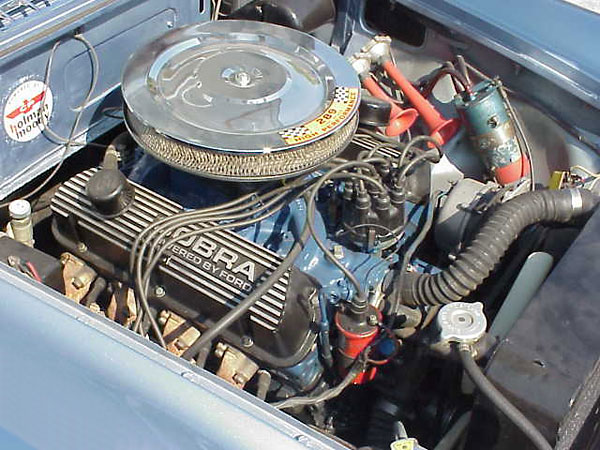
�
By removing the heater shelf and placing the engine far back, this car demonstrates
�
that the Ford V8 can be installed without modifying the MGB's front crossmember or
�
steering geometry. The weight distribution of this car is nearly unchanged from stock.
�
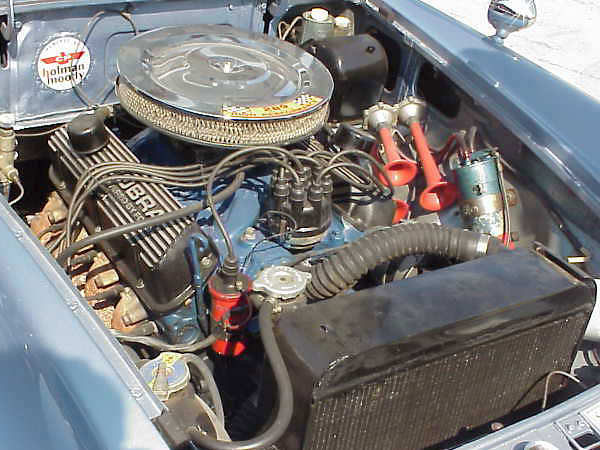
�
Even with iron cylinder heads and exhaust manifolds, this car is lighter than an MGC
�
(which wasn't introduced until 1967) - and the V8 engine fits under the stock MGB hood!
�
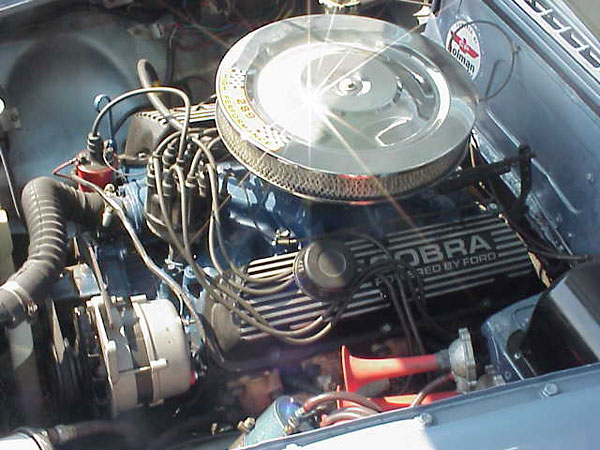
�
This car would also be quite competitive with a Sunbeam Tiger. Mark I and Mark II Tigers
�
came with 260cid Ford V8s. Starting in 1967, the Mark III version came with the 289cid
�
engine. The Tiger is also a little heavier, at 2560 pounds curb weight.
�
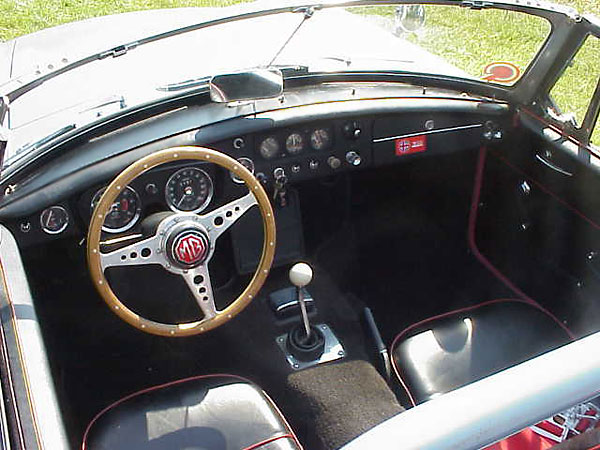
�
Shifter location is close to stock, but the driveshaft tunnel has been significantly widened.
�
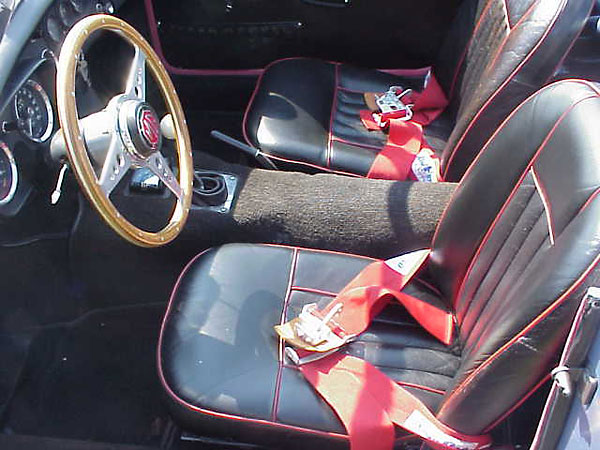
�
To accomodate the widened driveshaft tunnel, the MGB seats had to be rebuilt narrower.
�
�
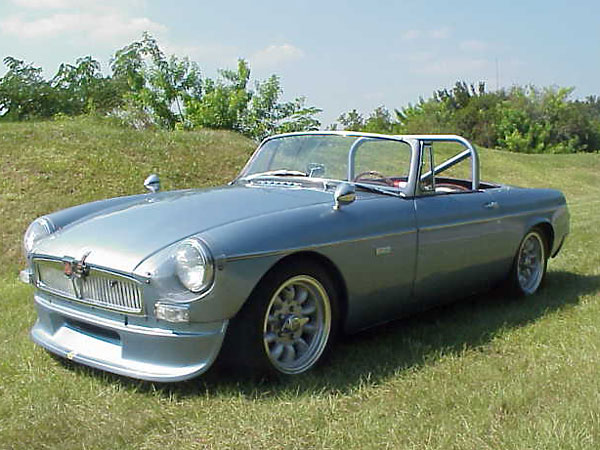
�
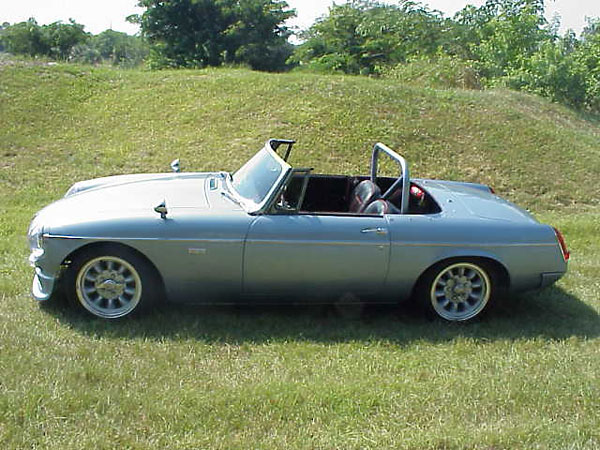
�
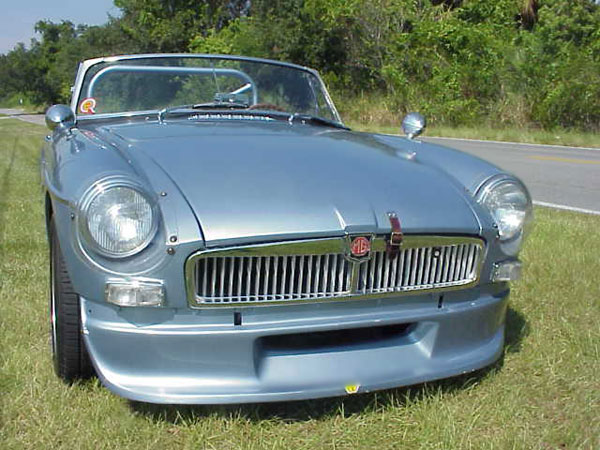
�
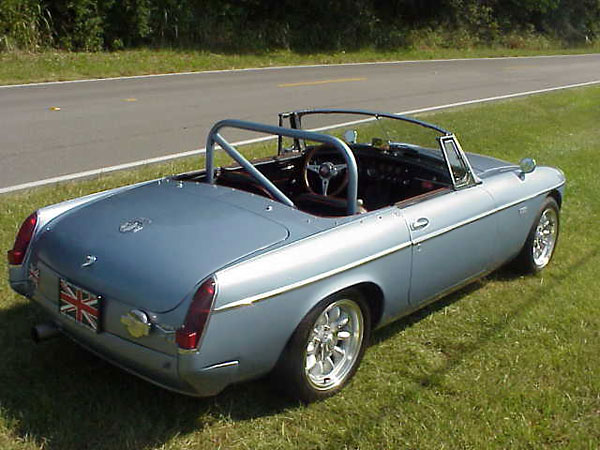
�
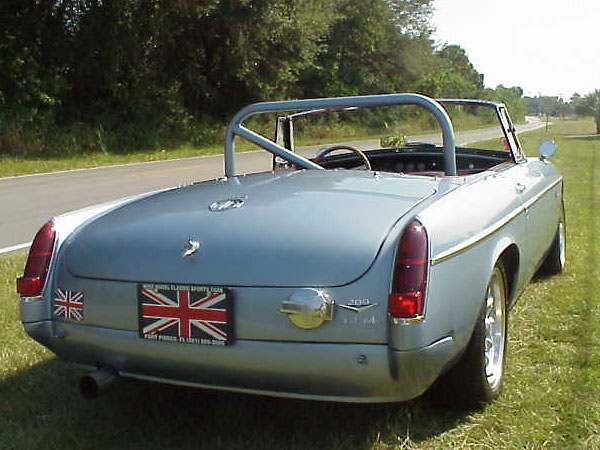 �
�

